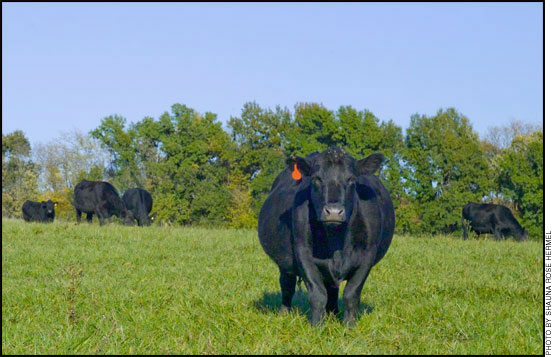
Determining When She'll Calve
Veterinarian prefers ultrasound to palpation when estimating the date.
Some producers use preg-checking to predict calving dates. According to Jeff Hoffman, a USDA veterinarian who had a cattle practice at Salmon, Idaho, for many years, ultrasound is more accurate than palpation for determining stage of pregnancy. Hoffman backs up his preference with his own experience, noting that by using ultrasound he realized he's not as accurate in predicting stage of gestation using palpation as he thought.
"There's enough variation in cows, when palpating rectally, that you can be fooled," Hoffman says. "Some are further along than what they feel like (when assessing size of the uterus, amount of fluid, etc.) and some a little shorter."
When palpating cows early in gestation, you usually date pregnancy by size of the uterus, Hoffman explains. "As the cow gets a little further along you can bump the fetus within the uterus. When she gets to about 100 to 110 days, the uterus has dropped down farther below the pelvic rim and you can't reach the entire uterus. At this point you go by size of the buttons (cotyledons) or assess diameter of uterine arteries. When you get past about 4 months, you mainly go by size of the cotyledons. There will be some tiny changes, so you may be a couple weeks off in your estimation of pregnancy length."
Ultrasound is another option. "It's more accurate, especially for determining when she was bred and when she should calve. Ultrasound can be done earlier than palpation and be very accurate," he says. One downside to early checking is that it's possible to have some early abortions afterward; a cow that checked pregnant may end up open or very late.
If trying to determine when cows were bred in order to predict when they'll calve, keep in mind that preg-checking is never 100% accurate on due dates, even if you correctly estimate length of gestation.
 "There's some individual variation among cows. A cow can calve up to two weeks ahead of her 'due date,' or up to two weeks later, as shown by a study looking at length of calving season. In this study, 100 heifers were synchronized and bred on one day. Even though they were all bred the same day, their calving season was a month long, with some calves arriving two weeks ahead of their due date and some two weeks late," Hoffman explains.
"There's some individual variation among cows. A cow can calve up to two weeks ahead of her 'due date,' or up to two weeks later, as shown by a study looking at length of calving season. In this study, 100 heifers were synchronized and bred on one day. Even though they were all bred the same day, their calving season was a month long, with some calves arriving two weeks ahead of their due date and some two weeks late," Hoffman explains.




